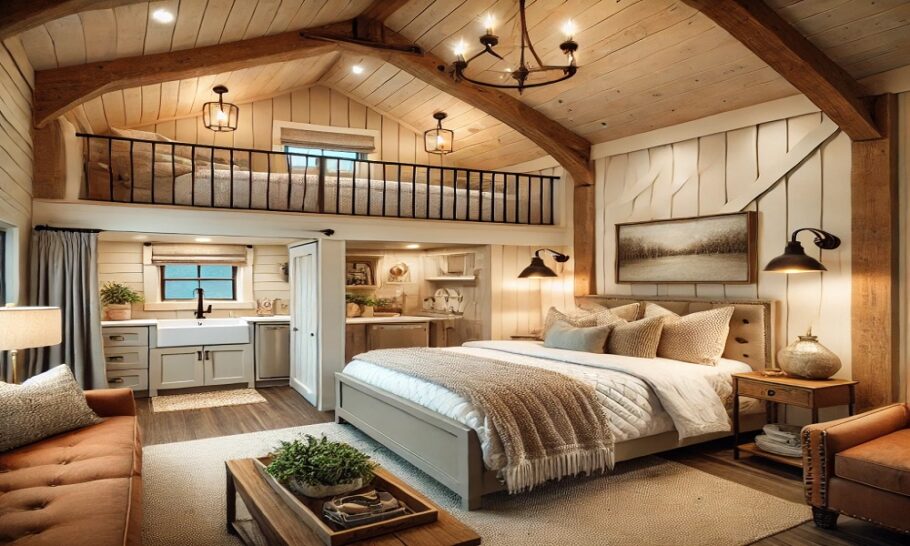In a world increasingly aware of climate change and environmental degradation, many homeowners are seeking ways to reduce their carbon footprint and live more sustainably. One of the most exciting trends to emerge from this movement is the barndominium—a stylish, functional fusion of barn and condominium. What started as a rural housing solution has now transformed into a sustainable living movement that combines eco-conscious construction, energy efficiency, and minimalist design.
If you’re considering building a barndominium or transforming your lifestyle to be more environmentally friendly, this guide will explore how barndominiums support sustainable living and how you can make yours even greener.
What Is a Barndominium?
A barndominium (often affectionately called a “barndo”) is a type of home that combines the rustic charm of a barn with the comforts and efficiency of modern housing. Typically made from metal or steel frames with open interior layouts, barndominiums are faster and often cheaper to build than traditional homes. But what truly sets them apart is their potential for sustainability.
Why Barndominiums Are Naturally Sustainable
Barndominiums lend themselves naturally to sustainable living for several reasons:
- Efficient Use of Materials
Barndominiums often use metal frames and siding, which are not only durable and recyclable but also reduce the need for traditional timber. By minimizing the use of wood, barndos help preserve forests and reduce the carbon footprint associated with deforestation.
- Open Floor Plans
Their open interior design allows for natural airflow and lighting, which means you can reduce your dependence on artificial heating, cooling, and lighting. Less energy use equals lower utility bills and a smaller environmental impact.
- Smaller Footprints
While barndominiums can be quite spacious, many are designed to be compact and minimalistic. Smaller homes consume fewer resources during construction and require less energy to maintain.
Designing a Sustainable Barndominium: Key Considerations
If you’re building or renovating a barndo with sustainability in mind, here are some essential design strategies to consider:
- Energy-Efficient Insulation
Steel buildings are durable, but they can be prone to heat transfer. To combat this, invest in high-quality insulation such as spray foam or rigid board insulation. Not only does this keep your home comfortable, but it also reduces the load on your HVAC system.
- Solar Power Integration
One of the most impactful ways to go green is to integrate solar panels into your barndominium. Given the large roof surfaces typically found on barndos, solar systems can be installed without aesthetic compromise and often generate more than enough electricity to power your home.
- Rainwater Harvesting Systems
Barndos are a perfect candidate for rainwater collection thanks to their large, sloped metal roofs. Captured rainwater can be used for irrigation, livestock, or even treated for domestic use, depending on your local regulations.
- Sustainable Interior Materials
Opt for reclaimed wood, bamboo flooring, low-VOC paints, and recycled countertops. These materials reduce your environmental impact and promote a healthier indoor environment.
- Smart Technology
Smart thermostats, lighting, and energy monitors help you control and reduce your energy use. Combined with a solar system, you can achieve a near net-zero energy home.
Off-Grid Possibilities: Going the Extra Mile
For those truly committed to sustainable living, barndominiums can even be designed to function off the grid. Here’s how:
- Solar + Battery Storage: Pairing solar panels with a battery storage system (like Tesla Powerwall or similar) allows your home to function independently from the utility grid.
- Composting Toilets: These systems eliminate the need for a septic system and use no water for flushing—ideal for remote locations.
- Wind Turbines: If your location is windy enough, small-scale wind turbines can supplement or replace solar power.
- Permaculture Landscaping: Grow your own food with minimal water use and chemical inputs. Barndos often sit on ample land—why not turn that into a sustainable food source?
Financial Incentives for Going Green
Making your barndominium sustainable doesn’t just benefit the planet—it can also save you money. Many federal and state programs offer tax credits, rebates, and grants for energy-efficient upgrades:
- Federal Solar Tax Credit (ITC): Homeowners can deduct up to 30% of the cost of installing solar panels.
- Energy-Efficient Mortgages: Some lenders offer favorable terms if you include sustainable features in your build.
- State-Level Rebates: Check with your state’s energy department to find rebates for efficient windows, insulation, heat pumps, and more.
Challenges to Consider
While barndominiums offer great potential for sustainable living, there are a few hurdles to be aware of:
- Zoning Laws: Some municipalities don’t allow metal homes or have strict building codes. Always verify local regulations before building.
- Financing: Not all banks are familiar with barndos, which can make securing a mortgage more challenging.
- Initial Costs: While green features save money in the long run, they can require a higher upfront investment.
Still, with careful planning and the right contractor, these challenges are usually easy to overcome.
Final Thoughts
Sustainable living isn’t just a trend—it’s a responsibility. Barndominiums provide a rare opportunity to build a home that’s both environmentally conscious and uniquely stylish. Whether you’re dreaming of a cozy countryside retreat or planning a full off-grid homestead, designing with sustainability in mind can lead to a healthier, more cost-effective, and planet-friendly lifestyle.
In the end, sustainable living in a barndominium is more than just a set of features—it’s a mindset. It’s about valuing efficiency over excess, nature over waste, and long-term wellbeing over short-term convenience. And with the right design and commitment, your barndo can become a model of 21st-century green living.

